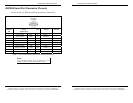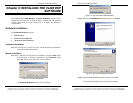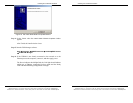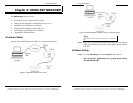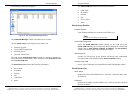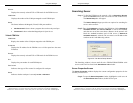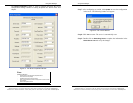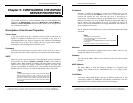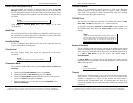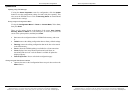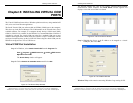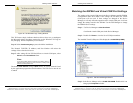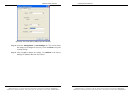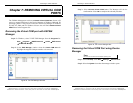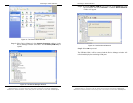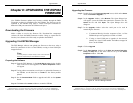
Server Properties Configuration
Manual Documentation Number: ESP904-0504 Chapter 5 33
B&B Electronics Mfg Co Inc – 707 Dayton Rd - PO Box 1040 - Ottawa IL 61350 - Ph 815-433-5100 - Fax 815-433-5104 – www.bb-elec.com
B&B Electronics Ltd – Westlink Commercial Park – Oranmore, Galway, Ireland – Ph +353 91-792444 – Fax +353 91-792445 – www.bb-europe.com
Server Serial Port (Select 1 to 4)
The configuration for each port is displayed one at a time. In the ESP
Manager
, double-click on the port in the Serial Server List. This brings up
the Server Properties window for that port. Make any desired changes to the
configuration and then click on Update. Only the settings for the port shown
are stored.
N
N
o
o
t
t
e
e
:
:
Click Update to store settings for each port before changing to the other port.
Using Telnet or Console Mode, Save stores settings for all ports
simultaneously.
Baud Rate
The serial port baud rate on the ESP904 must match the serial baud rate of
the connected device unless using Virtual COM mode. In Virtual COM mode
the software program will establish serial settings.
Data/Parity/Stop
Set this to match the data format used by the device connected when the
Virtual COM mode is not being used.
Flow Control
The Flow Control setting must match the requirements of the device
connected.
N
N
o
o
t
t
e
e
:
:
Select None when setting ESP Port 1 as RS-485 or 4-wire RS-422.
Connection Mode
The Connection Mode field has three options: Server, Client and Client (no
heartbeat)
• When using the
Virtual COM Port feature, select Server.
• When using a
TCP or UDP Socket program, select Server.
• When using
Paired Mode communication between two serial servers set
up one as a
Client and the other as a Server.
• When connecting to a server that does not support
Heartbeat, select
Client (no Heartbeat).
Server Properties Configuration
34 Chapter 5 Manual Documentation Number: ESP904-0504
B&B Electronics Mfg Co Inc – 707 Dayton Rd - PO Box 1040 - Ottawa IL 61350 - Ph 815-433-5100 - Fax 815-433-5104 – www.bb-elec.com
B&B Electronics Ltd – Westlink Commercial Park – Oranmore, Galway, Ireland – Ph +353 91-792444 – Fax +353 91-792445 – www.bb-europe.com
TCP/UDP Protocol
Select TCP (Transmission Control Protocol) or UDP (User Datagram
Protocol) protocol. If the application does not require a UDP connection,
select TCP. TCP guarantees reliable communication with error checking
whereas UDP provides faster transmission.
TCP/UDP Port
This sets the port number for connection. The default port number is 4000,
4001, 4002, and 4003 for serial ports 1, 2, 3, and 4 respectively.
In all modes of operation,
Direct IP or Virtual COM, the port number set in
the ESP904 menu must match the
Virtual COM or socket software port
settings.
N
N
o
o
t
t
e
e
:
:
Example: The Virtual COM default setting is TCP/UDP Port 4000. If the port #
property is changed to 4001, the virtual COM port will have to be changed to
4001. The hardware settings can be changed from the ESP Manager or
Console Configuration Menu. The Virtual COM port setting also can be
changed within the Device Manager of the computer on which it is installed.
Remote IP Address
This is a security feature activated by entering the IP address of the desired
client. The ESP904 will only communicate with the listed IP address and all
other requests for connection will be filtered out. The ESP904 must be set up
as a
TCP or UDP Server to use this feature. The default setting is
255.255.255.255.
If
Paired Mode is not being used, do not change this setting until the
application has been tested and is communicating properly. Then activate the
address filtering feature.
N
N
o
o
t
t
e
e
:
:
Refer to Chapter 1 Paired Mode
Timeout
Default for the Timeout property is 0, or no timeout. Setting Timeout to any
value between 1 and 255 seconds activates it. If set to 5 seconds and the
ESP904 is configured as a Server. In this scenario the Client makes a
connection and communications start. If communications are ideal for 5
seconds the ESP904 will reset and make itself available for another client
connection.



